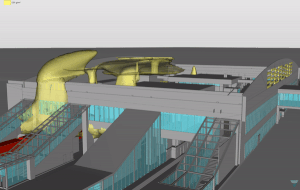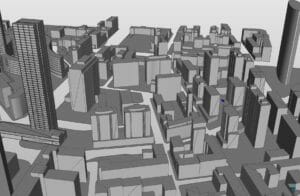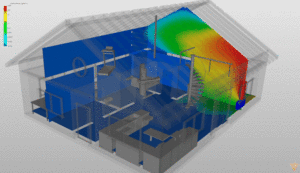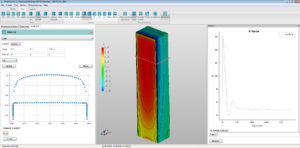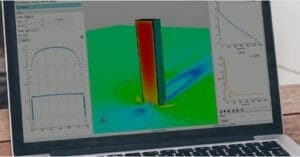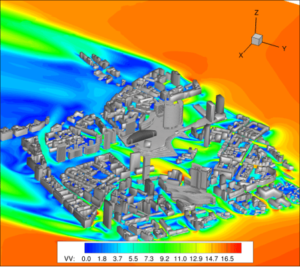Placing computational wind engineering at the fingertips of structural engineers
Computational wind engineering (CWE) is a fascinating new science that uses computational fluid dynamics (CFD) methods for applications in building and the environment. From the technical-scientific point of view there are no differences between CWE and CFD. They both simulate a fluid flow that interacts with objects. The discretized Navier-Stokes equations, which govern all fluid flows, cannot distinguish whether the object is a tall building or the model of a car. The drag coefficient of the car and the pressure coefficient of the building represent the same thing: the wind load.
However, CFD users are very different to CWE users. Mechanical and aeronautical engineers have a much broader knowledge of fluid mechanics and have been using CFD for 30 years. They are accustomed to navigating the many menus and choosing from a plethora of technical options.
Classical CFD is not the right tool
CFD users have mastered the use of the most popular and successful CFD software packages. They are still as complicated, cumbersome, and time-consuming as they were almost 20 years ago. This software does not correspond to the different needs and the environment of civil engineers.
But times have changed. The mathematical methods and physical models used in CFD were mainly developed in the Eighties and Nineties. Nothing noteworthy has appeared in the last two decades in the CFD scientific iterature. Analysts and developers, who are familiar with the entire history of its development, are now in a position to potentially simplify the use of CFD software. This is what we did. We developed VENTO AEC as the first CFD software exclusively for architecture, engineering, and construction (AEC) professionals. It was tailored using more than 50 man-years of CFD experience to build a new CWE software that requires no previous knowledge of CFD. It delivers reliable, validated results with unparalleled ease-of-use and speed.
The key to this dramatic simplification was a new technology that emerged in the early years of the new millennium, the immersed boundary (IB) technique. In a nutshell, IB technique allows complete automatization of the mesh generation process, which in turn reduces the user’s time from many hours or even days, to mere tens of minutes. No other commercial CFD software implements this technique.

